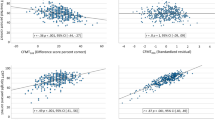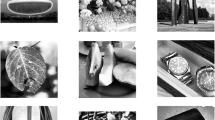Abstract
This study investigated the face inversion effect in rhesus monkeys (Macaca mulatta). Face stimuli consisted of ten black-and-white examples of unfamiliar rhesus monkey faces, brown capuchin faces, and human faces. Two non-face categories included ten examples of automobiles and abstract shapes. All stimuli were presented in a sequential matching-to-sample format using an automated joystick-testing paradigm. Subjects performed significantly better on upright than on inverted presentations of automobiles, rhesus monkey and capuchin faces, but not human faces or abstract shapes. These results are inconsistent with data from humans and chimpanzees that show the inversion effect only for categories of stimuli for which subjects have developed expertise. The inversion effect in rhesus monkeys does not appear to be face-specific, and should therefore not be used as a marker of specialized face processing in this species.
Similar content being viewed by others
Author information
Authors and Affiliations
Additional information
Received: 18 November 1998 / Accepted after revision: 9 May 1999
Rights and permissions
About this article
Cite this article
Parr, L., Winslow, J. & Hopkins, W. Is the inversion effect in rhesus monkeys face-specific?. Anim Cogn 2, 123–129 (1999). https://doi.org/10.1007/s100710050032
Issue Date:
DOI: https://doi.org/10.1007/s100710050032




